When it comes to achieving radiant, youthful skin, two prominent treatments often come to the forefront: chemical peels and laser therapies. Both have proven effective in addressing various skin concerns, but determining which is best suited for your skin type requires a comprehensive understanding of each treatment’s mechanisms, benefits, and potential risks.
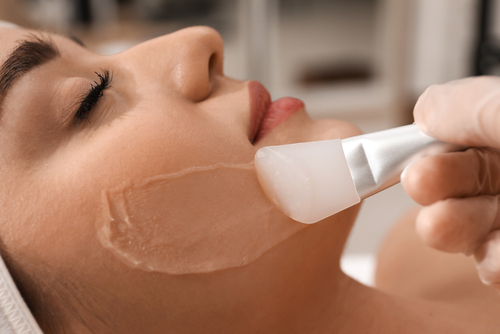
Chemical Peels
Chemical peels involve the application of a chemical solution to exfoliate the skin, promoting the shedding of dead skin cells and stimulating the regeneration of new, healthier skin. They are categorized based on their depth of penetration:
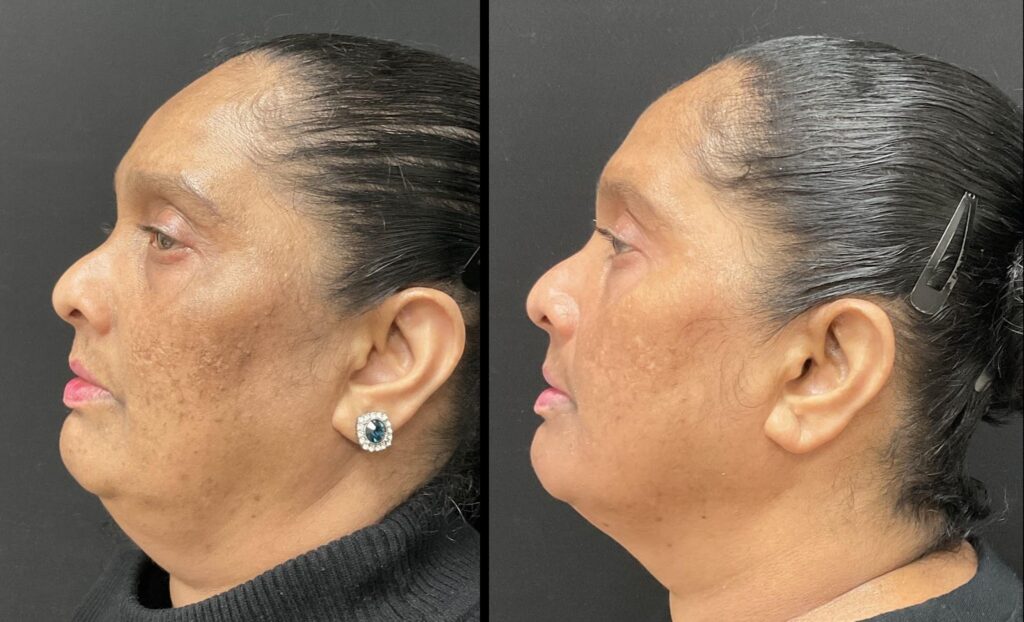
- Superficial Peels
These peels target the outermost layer of the skin (epidermis) and are ideal for refreshing dull skin and addressing minor imperfections. They typically involve mild acids like alpha-hydroxy acids (AHAs), such as glycolic acid.
- Medium Peels
Penetrating deeper into the epidermis, medium peels are effective for treating issues like sun damage, pigmentation irregularities, and fine lines. Trichloroacetic acid (TCA) is commonly used in these peels.
- Deep Peels
These reach the deeper layers of the dermis and are used for more severe skin concerns, such as deep wrinkles, scars, and precancerous growths. Phenol is a common agent in deep peels. Due to their intensity, deep peels require a more extended recovery period and carry a higher risk of complications.
Laser Treatments
Laser therapies utilize focused light energy to target specific skin concerns. The type of laser and its settings can be adjusted based on the desired outcome and the patient’s skin type:
- Ablative Lasers
These lasers, such as CO₂ and Erbium lasers, remove the outer layers of the skin, promoting collagen production and skin tightening. They are effective for treating wrinkles, scars, and other significant skin issues but require a longer downtime.
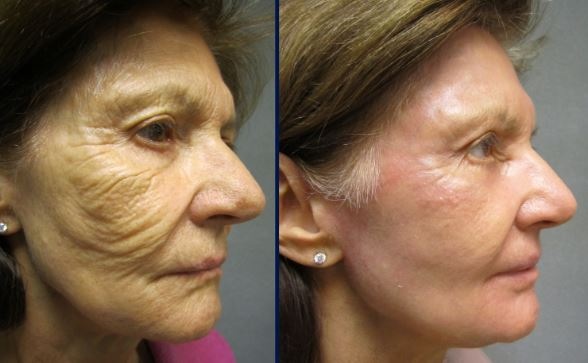
- Non-Ablative Lasers
Targeting deeper layers without removing the skin’s surface, non-ablative lasers, like Fraxel Dual, stimulate collagen growth and are suitable for improving skin tone and texture with minimal downtime.
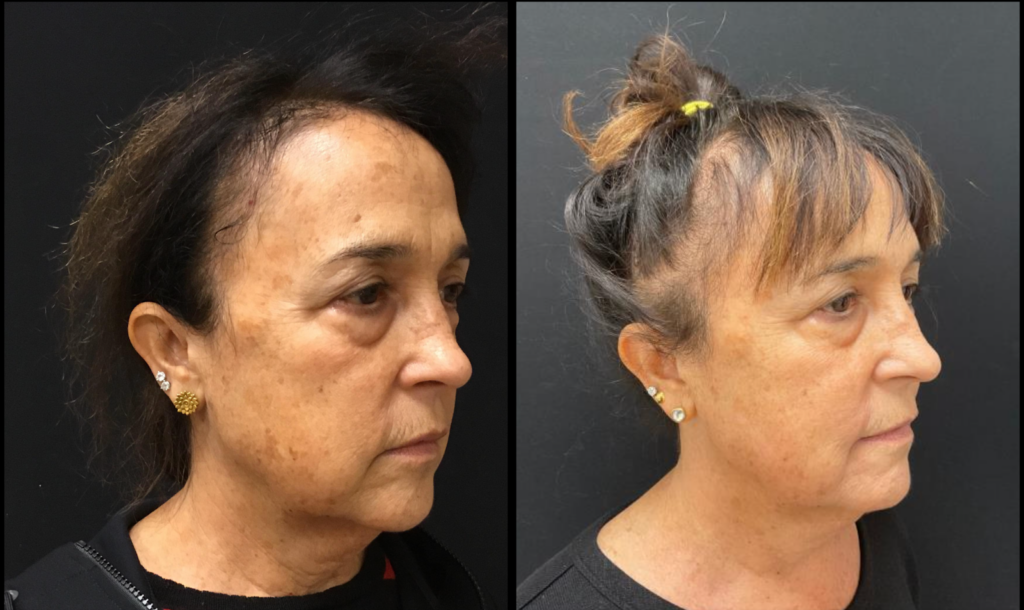
- Fractional Lasers
These lasers treat a fraction of the skin at a time, creating micro-injuries that promote healing and collagen production. They can be either ablative or non-ablative and are effective for various skin concerns, including pigmentation and scarring.
Determining the Best Treatment for Your Skin Type
Your skin type plays a pivotal role in determining the most suitable treatment. Factors such as skin tone, sensitivity, and specific concerns must be considered to minimize risks and optimize results.
Darker Skin Tones
Individuals with darker skin tones are more susceptible to post-inflammatory hyperpigmentation (PIH) and scarring. Therefore, treatments must be chosen with caution:
- Chemical Peels
Superficial to medium peels containing salicylic or mandelic acid are generally safer options for darker skin tones. These acids are gentler and reduce the risk of hyperpigmentation. Deep peels are typically avoided due to the higher risk of adverse effects.
- Laser Treatments
Certain laser treatments, such as PicoWay® and CUTERA® Genesis, have been found effective and safe for darker skin tones when performed by experienced practitioners. These lasers can reduce the appearance of scars and pigmentation issues without causing significant damage to the surrounding tissue.
- Topical Treatments
Incorporating specialized skincare products can enhance treatment outcomes. For instance, the LUMA Cream is a medical-grade moisturizer designed to combat hyperpigmentation. Formulated with skin-brightening ingredients like Retin-A, Arbutin, and AHA antioxidants, it promotes cell turnover, resulting in a healthier, more radiant complexion.
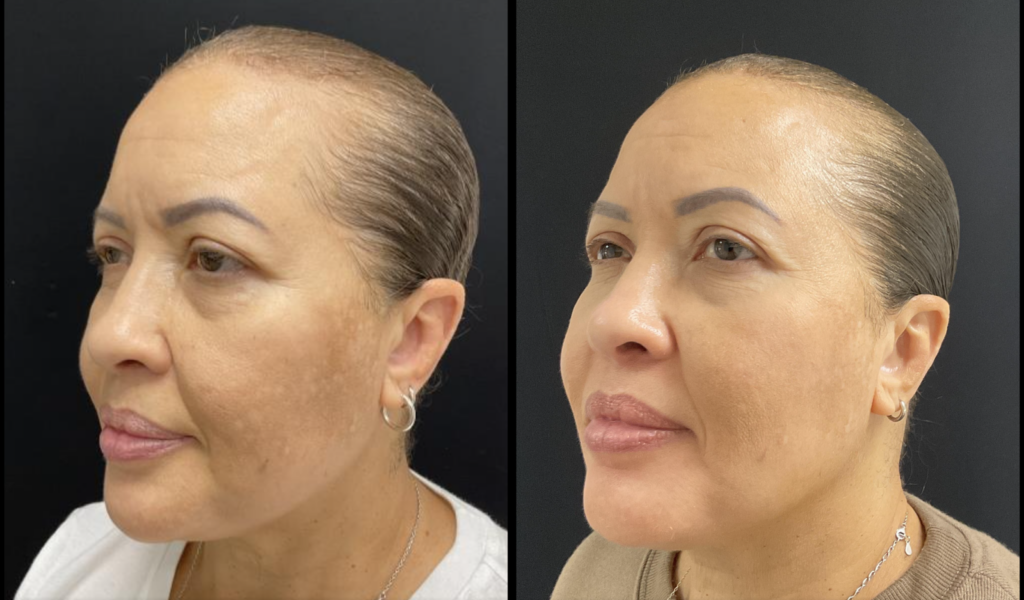
Lighter Skin Tones
Those with lighter skin tones have a broader range of treatment options with a reduced risk of hyperpigmentation:
- Chemical Peels
Glycolic acid peels are often recommended for fair skin due to their effectiveness in exfoliation and rejuvenation. Medium to deep peels can also be considered, depending on the specific skin concerns.
- Laser Treatments
Ablative and non-ablative lasers, including Fraxel Dual, are generally safe and effective for lighter skin tones, offering significant improvements in skin texture and appearance.
Sensitive Skin
For individuals with sensitive skin, the choice of treatment must be made carefully to avoid irritation and adverse reactions:
- Chemical Peels
Mild peels with lactic acid or mandelic acid are suitable for sensitive skin, providing gentle exfoliation without causing significant irritation.
- Laser Treatments
Non-ablative lasers with adjustable settings can be tailored to treat sensitive skin effectively while minimizing discomfort and downtime.
- Customized Topical Treatments
Customized skincare products can enhance the look and feel of your skin. Dr. Ariel Ostad’s LUMA Cream is a medical-grade moisturizer that addresses hyperpigmentation. The LUMA Cream is formulated with skin-brightening ingredients like Retin-A, Arbutin, and AHA antioxidants. This cream also promotes cell turnover, resulting in healthier-looking skin and a more luminous complexion.
Specific Skin Concerns and Treatment Recommendations
Beyond skin type, specific concerns also influence the choice between chemical peels and laser treatments:
- Hyperpigmentation
Both chemical peels and laser treatments can address hyperpigmentation. Chemical peels exfoliate the outer layers, promoting cell turnover and reducing pigment. Lasers like PicoWay® target and break down excess pigment, leading to a more even skin tone.

- Acne Scarring
Laser treatments, such as Fraxel Dual and PicoWay®, are effective at reducing the appearance of acne scars by stimulating collagen production and resurfacing the skin. Chemical peels can also be beneficial, especially for superficial scars.
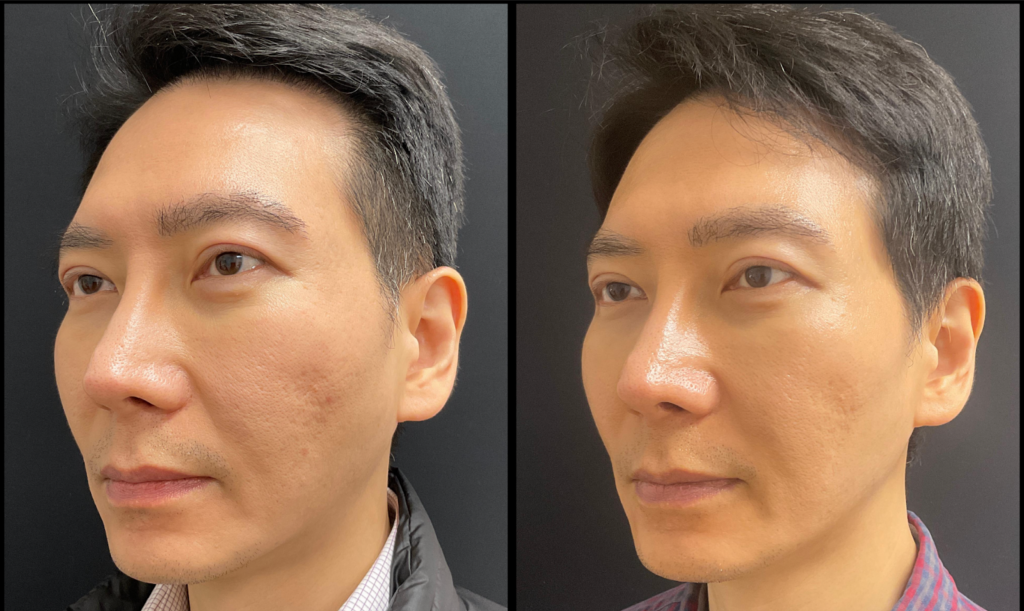
- Fine Lines and Wrinkles
Both treatments can improve the appearance of fine lines and wrinkles. Ablative lasers offer more dramatic results but come with increased downtime. Chemical peels provide a more gradual improvement with less recovery time.
Downtime and Recovery
- Chemical Peels
Recovery time depends on the depth of the peel. Superficial peels may cause mild redness and peeling for a few days, while deep peels can require up to two weeks of healing, with significant redness and sensitivity.
- Laser Treatments
Ablative lasers have longer recovery times, often requiring one to two weeks of healing. Non-ablative lasers have minimal downtime, usually only a few days of redness and swelling.
Pain and Discomfort
- Chemical Peels
Mild tingling or burning sensations are common during the procedure, with deeper peels potentially causing more discomfort.
- Laser Treatments
Ablative lasers may require numbing cream or anesthesia due to their intensity. Non-ablative lasers are generally well-tolerated with only mild discomfort.
Long-Term Results
- Chemical Peels
Results last longer with medium and deep peels, but maintenance treatments are often necessary every few months to maintain results.
- Laser Treatments
Depending on the laser type, results can last for years, particularly with fractional and ablative lasers that stimulate collagen production. Non-ablative treatments may require multiple sessions for optimal results.
Which Treatment is Best for You?
The choice between chemical peels and laser treatments ultimately depends on:
- Your Skin Concerns
Peels work well for mild to moderate texture and pigmentation issues, while lasers are better for deeper scars, wrinkles, and severe sun damage.
- Your Skin Type
Those with darker skin should be cautious with aggressive laser treatments or deep peels.
- Your Tolerance for Downtime
If you need a quick recovery, superficial peels or non-ablative lasers are the best options.
- Long-Term Goals
If you’re looking for skin tightening and long-lasting collagen production, lasers offer better results.
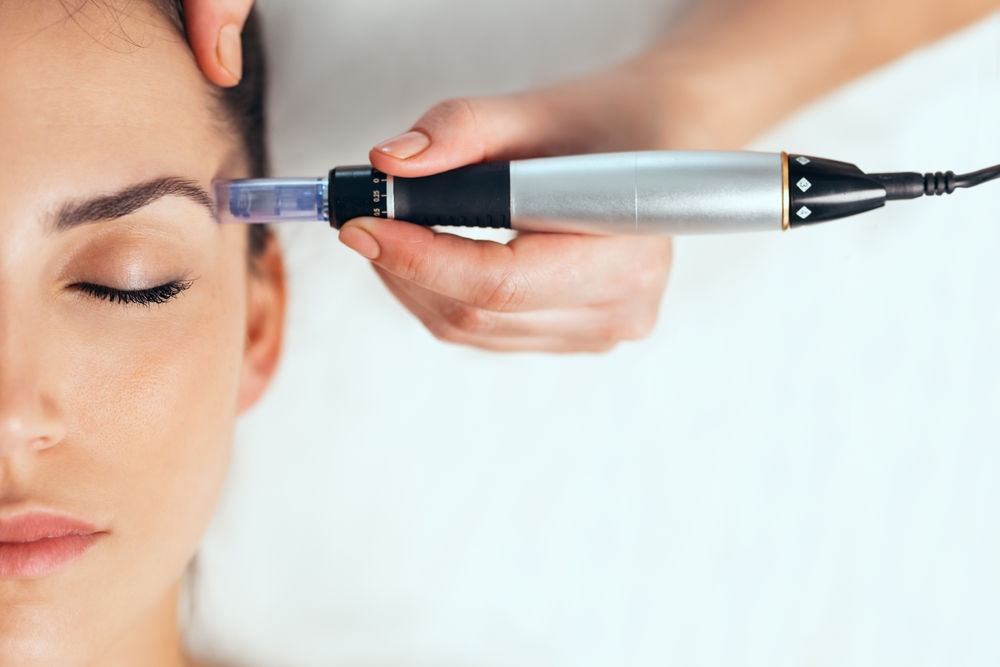
Consultation and Professional Guidance
Before undergoing any treatment, it is crucial to consult with a qualified dermatologist or cosmetic surgeon like Dr. Ariel Ostad. A professional assessment ensures that the chosen treatment aligns with your skin type, concerns, and aesthetic goals, minimizing risks and enhancing outcomes.
Both chemical peels and laser treatments are highly effective for skin rejuvenation. While peels are more affordable and ideal for mild to moderate concerns, laser treatments offer deeper, longer-lasting results, especially for severe scarring and wrinkles. Understanding your skin type and concerns, along with consulting with Dr. Ostad, will help you determine the best approach to achieving a radiant complexion.
Reveal your best skin—whether it’s the deep rejuvenation of lasers or the glow-boosting power of chemical peels, find the perfect treatment for your skin type today! Say goodbye to wrinkles, acne scars, and uneven tone with expert-recommended solutions tailored just for you. Call 212-517-7900 Book your consultation now with our online contact form and take the first step toward radiant, youthful skin!
Schedule a
Consultation
Consultation
By submitting this form you agree to be contacted via phone/text/email.
 897 Lexington Ave. New York, NY 10065
897 Lexington Ave. New York, NY 10065 212-517-7900
212-517-7900